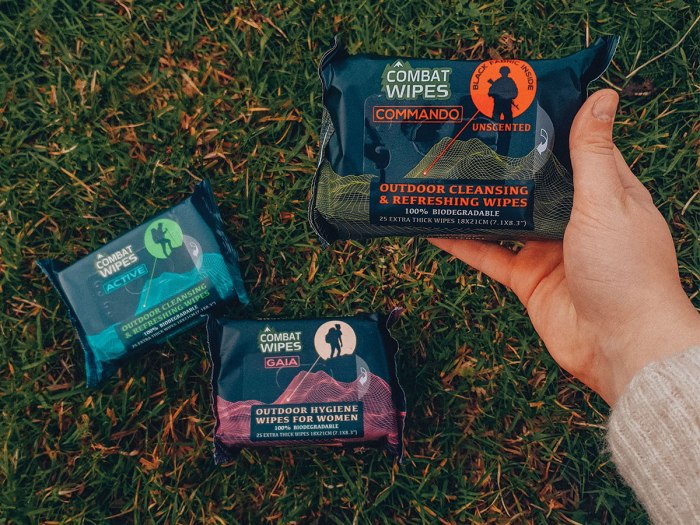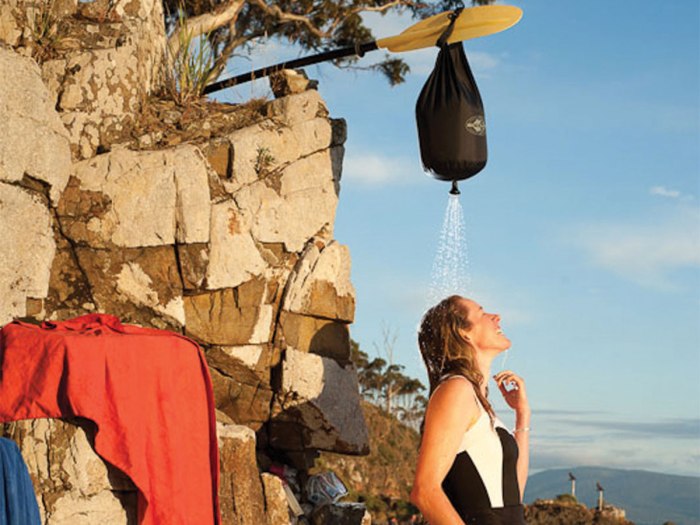Stay Clean and Healthy in the Outdoors With These Hygiene Tips

Camping and backpacking are all about getting dirty guilt-free, right? Well, yes, but with an important reminder: The same hands we use for building campfires, exploring the wilderness and relieving ourselves outside will also — several times a day — handle food that goes into our mouths.
Hands are a primary route for transmitting bacteria, viruses and other little nasties that can wreak serious havoc. Follow these tips to make sure you stay healthy and clean.
FOOD SAFETY
• Always wash your hands before eating or preparing food. Whenever soap isn’t appropriate (for instance, to avoid contaminating water sources), scrub and rinse your hands in water to remove dirt, and then use hand sanitizer to kill germs and bacteria.
• Instruct everyone to not stick their hands into a shared food bowl or bag. Use a serving spoon or pour food into a personal bowl.
DON’T FORGET
• Must-haves on any trip include a toothbrush, small tube of toothpaste and dental floss. And don’t forget toilet paper!
• Girls, don’t forget feminine hygiene products. Follow Leave No Trace principles in the backcountry by packing out any used items.
• A small plastic bottle of unscented alcohol-based hand sanitizer — or a large bottle for a group — should be standard equipment on any trip. Keep it where everyone can see and use it, like on a picnic table in camp. Don’t wait to learn this lesson until you suffer a miserable day of vomiting from a bacterial infection.
CLEAN GEAR
 Camping wipes, like Surviveware Biodegradable Wet Wipes ($10 for a pack of 32, surviveware.com) or Combat Wipes ($7 for a pack of 25, combatwipes.com), provide a quick, convenient way for washing. Taking a “bath” with camping or baby wipes to remove dirt and sweat prevents infections, helps you sleep better, and keeps your sleeping bag from getting dirty and smelly. Pack out any used wipes, even those sold as biodegradable.
Camping wipes, like Surviveware Biodegradable Wet Wipes ($10 for a pack of 32, surviveware.com) or Combat Wipes ($7 for a pack of 25, combatwipes.com), provide a quick, convenient way for washing. Taking a “bath” with camping or baby wipes to remove dirt and sweat prevents infections, helps you sleep better, and keeps your sleeping bag from getting dirty and smelly. Pack out any used wipes, even those sold as biodegradable.
If you prefer soap, use biodegradable products like Dr. Bronner’s Pure-Castile Liquid Soap ($7 for an 8-ounce bottle, shop.drbronner.com) or Campsuds ($6 for 4 oz., sierradawn.com). A bandanna or quick-drying microfiber pack towel doubles as a washcloth that can be easily rinsed and dried after each use.
Like hands, your feet are also a cleanliness priority. They spend hours a day in shoes or boots getting sweaty, which can promote blisters and fungus growth. At least once a day, remove your footwear and socks, and rinse your feet. Dry them thoroughly before putting your boots back on.

At the end of the day, a solar camp shower left sitting in the sun provides a hot, albeit brief, shower. The Sea To Summit Pocket Shower ($35, 5 oz., seatosummitusa.com) is light enough for backpacking and holds about 2 ½ gallons. Don’t bathe with soap in a stream or lake; phosphates in standard soap can pollute water and cause harmful algal blooms. Instead, bathe at least 200 feet from bodies of water.
With a limited wardrobe, use the same layers when hiking, and keep a clean change of base layers to wear around camp or when sleeping. Carry enough underwear to change every day. You can wash your clothes if necessary. Again, remember to not wash them in or near bodies of water so you don’t contaminate the aquatic environment.
Ok